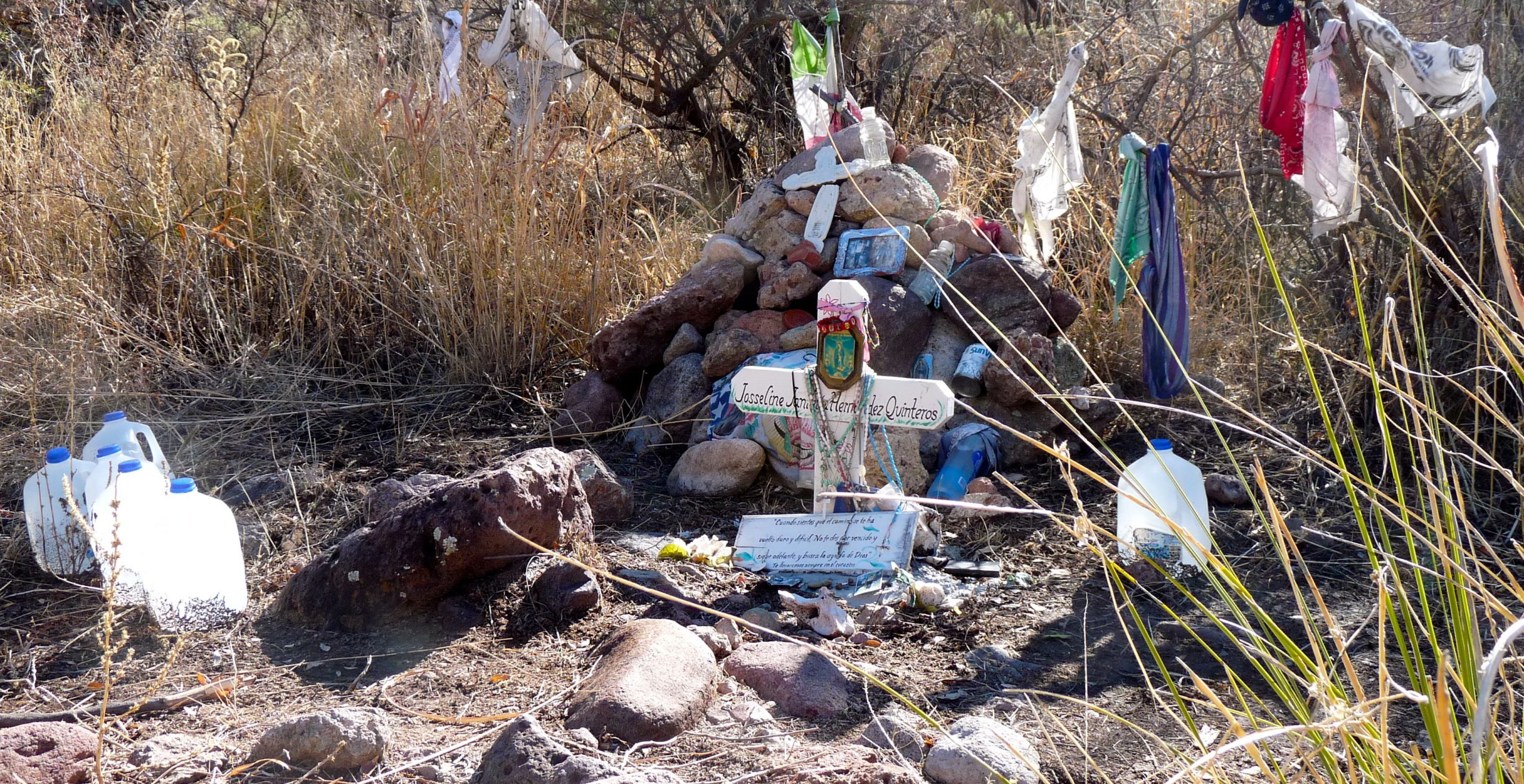Indianz.Com > News > Cronkite News: Deaths of migrants rose amid COVID-19 and climate change
Report: Migrant deaths in the desert have reached seven-year high
Cronkite News
WASHINGTON — Remains of 181 migrants were found in the Arizona desert through the end of September, 37 more than in all of last year and the most since 2013, according to the group Humane Borders.
The rise in migrant deaths comes during a year of intense heat and little precipitation for Arizona – but also at a time when the number of people caught crossing the border has fallen sharply.
Humanitarian groups and county officials along the border blame the rising deaths on years of border security policies that have pushed migrants toward riskier routes into the U.S. – along with this year’s harsh weather, expanded border security and COVID-19 health restrictions.
“It’s kind of like stopping water: If you block it up in one place, it’s going to go somewhere else,” said Pima County Sheriff Mark Napier. “We’re seeing the results of that as an increase in deaths.”

Sometimes it’s not the authorities who find migrants, he said, but migrants who seek out authorities. Napier said more than 85% of his calls to Customs and Border Protection are to help rescue migrants who called 911 because they are stranded in the desert without water. Sometimes authorities find migrants. And sometimes they find nothing more than a “leg bone or part of a skull.” “It’s not like a National Geographic special, and you are on some archeological dig and you come up with human remains,” Napier said. That was “somebody’s mother, somebody’s son, somebody’s father.” As an immigrant himself, Estrada said he admires what migrants and their families go through for the chance of a better life in the United States. But he calls it a “journey forged in desperation.” “You wonder who that person was, what that person went through, who victimized them, obviously,” Estrada said. “But a lot of cases they’re not victims of anything other than the weather, the climate and the terrain.” For more stories from Cronkite News, visit cronkitenews.azpbs.org.Tribal and congressional leaders are condemning the “utterly shameful” use of tear gas and rubber bullets to disperse a border wall protest. #DefendOodhamLand #TrumpWall #Arizona https://t.co/QsOq1PQoD9
— indianz.com (@indianz) October 21, 2020
Note: This story originally appeared on Cronkite News. It is published via a Creative Commons license. Cronkite News is produced by the Walter Cronkite School of Journalism and Mass Communication at Arizona State University.
Search
Filed Under
Tags
More Headlines
House Subcommittee on Indian and Insular Affairs gains new Republican leader
Native America Calling: Ringing in the Orthodox New Year in Alaska
Schedule of Senate committee hearings for Donald Trump nominees
‘Governor Burgum will serve Indian Country well’: Senate committees busy with Donald Trump’s nominees
NAFOA: 5 Things You Need to Know this Week
Chuck Hoskin: Cherokee Nation sees bright future for language programs
Native America Calling: Native in the Spotlight with Ted Nolan
Neal McCaleb, prominent citizen of Chickasaw Nation, passes on after storied career
South Dakota Searchlight: Tribes seek protection for Wounded Knee Massacre site
Arizona Mirror: Tribes receive climate resilience grants
Native America Calling: Native skiers
Alaska Beacon: Republicans still pushing to drill in Arctic National Wildlife Refuge
Iowa Capital Dispatch: Democrats object to hearing for Trump’s Interior nominee
North Dakota Monitor: Tribes share priorities with state lawmakers
Cronkite News: Indigenous Enterprise brings culture to New York City
More Headlines
Native America Calling: Ringing in the Orthodox New Year in Alaska
Schedule of Senate committee hearings for Donald Trump nominees
‘Governor Burgum will serve Indian Country well’: Senate committees busy with Donald Trump’s nominees
NAFOA: 5 Things You Need to Know this Week
Chuck Hoskin: Cherokee Nation sees bright future for language programs
Native America Calling: Native in the Spotlight with Ted Nolan
Neal McCaleb, prominent citizen of Chickasaw Nation, passes on after storied career
South Dakota Searchlight: Tribes seek protection for Wounded Knee Massacre site
Arizona Mirror: Tribes receive climate resilience grants
Native America Calling: Native skiers
Alaska Beacon: Republicans still pushing to drill in Arctic National Wildlife Refuge
Iowa Capital Dispatch: Democrats object to hearing for Trump’s Interior nominee
North Dakota Monitor: Tribes share priorities with state lawmakers
Cronkite News: Indigenous Enterprise brings culture to New York City
More Headlines